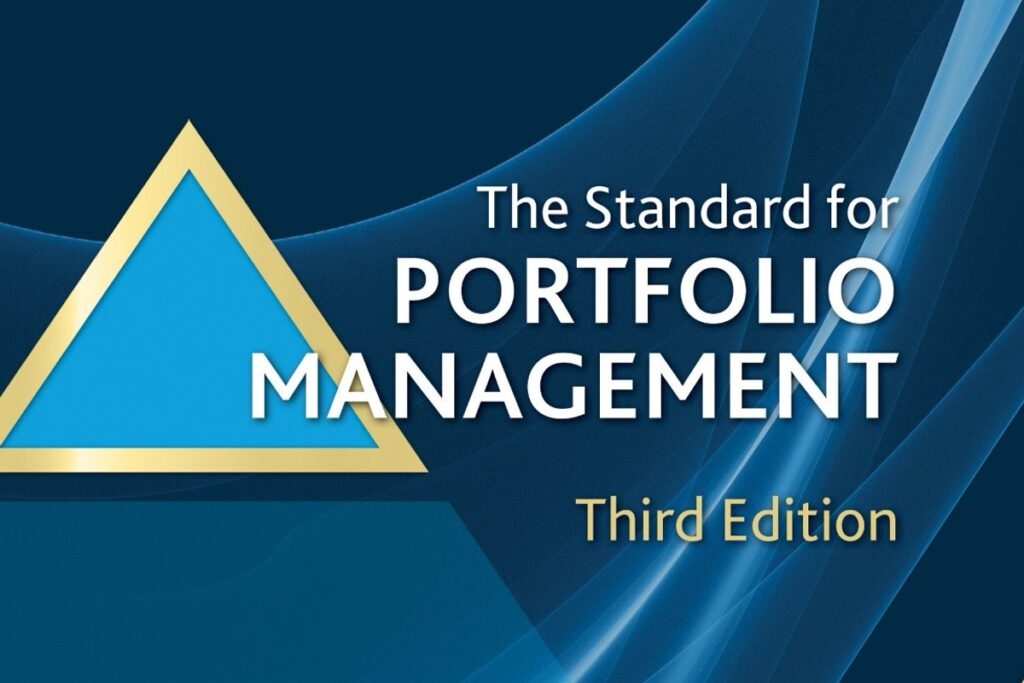In the evolving world of enterprise project delivery, organizations increasingly rely on portfolio management to ensure alignment between strategy and execution. The Standard for Portfolio Management – Third Edition, published by the Project Management Institute (PMI) in 2013, builds on earlier editions to provide a structured, process-based framework for managing portfolios of projects and programs in a coordinated way.
This edition marked a key maturity point for PMI’s portfolio management philosophy—introducing enhanced governance models, more defined performance metrics, and stronger alignment with organizational strategy.
What Is Portfolio Management According to PMI?
Portfolio management is the centralized management of one or more portfolios to achieve strategic objectives. A portfolio includes:
- Projects
- Programs
- Other work (e.g., operational initiatives)
The goal is to maximize business value through informed decision-making on prioritization, resource allocation, risk balancing, and investment return.
What’s Inside the Third Edition?
The Third Edition is organized into two major components:
1. The Standard (Core Framework)
Describes the portfolio environment and the relationships between portfolio management, organizational strategy, governance, and operations.
2. Portfolio Management Process Groups and Knowledge Areas
Just like PMBOK, it uses a process-based model:
Five Process Groups:
- Initiating
- Planning
- Executing
- Monitoring and Controlling
- Closing
Nine Knowledge Areas:
- Portfolio Governance Management
- Portfolio Strategic Management
- Portfolio Performance Management
- Portfolio Risk Management
- Portfolio Communication Management
- Portfolio Resource Management
- Portfolio Stakeholder Engagement
- Portfolio Financial Management
- Portfolio Value Management (new emphasis)
Each process includes Inputs, Tools & Techniques, and Outputs (ITTOs), standardizing the approach across diverse industries.
What’s New in the Third Edition (Compared to Second Edition)
- Introduction of Portfolio Value Management as a key component, emphasizing measurable business outcomes over simple project completion.
- Better integration between portfolio governance and enterprise strategy.
- Improved treatment of risk aggregation and strategic risk.
- More robust performance metrics and KPIs.
- Enhanced guidance on portfolio balancing and optimization.
- Clearer linkages between programs, projects, and portfolios.
Strengths of the Third Edition
✅ Comprehensive Process Model
Offers a PMBOK-style framework for those seeking detailed, structured portfolio governance and management.
✅ Stronger Focus on Value
Moves beyond tactical execution to emphasize how portfolio decisions drive business value and ROI.
✅ Governance and Decision-Making Framework
Introduces roles and responsibilities (e.g., Portfolio Review Board, Portfolio Manager) and outlines how decisions should be structured and escalated.
✅ Applicable Across Sectors
Whether in finance, construction, government, or tech, the standard provides industry-agnostic guidance.
✅ Supports PMO Maturity
A critical reference for PMOs evolving from project coordination to strategic investment oversight.
Limitations of the Third Edition
❌ No Agile or Adaptive Content
Released in 2013, this edition predates the agile-at-scale revolution. It assumes stable, long-term planning cycles and doesn’t address adaptive prioritization or lean portfolio flows.
❌ Complex and Heavy
The process-driven structure can be overwhelming, particularly for organizations seeking flexibility and speed in decision-making.
❌ Value Realization Still Underdeveloped
While the edition introduces portfolio value management, it lacks concrete techniques or examples for tracking and sustaining benefits over time.
Best Use Cases
Ideal for:
- Large enterprises and government bodies managing cross-departmental initiatives
- PMOs developing portfolio governance frameworks
- Organizations seeking standardization and process discipline
- Environments with a predictive planning culture
Not ideal for:
- Startups or agile-native organizations
- Teams needing lean or continuous delivery models
- Environments with fast-changing priorities requiring real-time reallocation
Legacy and Transition
The Third Edition laid the groundwork for the Fourth Edition (2017), which enhanced value realization, governance, and scalability. While the Third Edition remains useful for training and documentation, it has been overtaken in applicability by newer practices like:
- Lean Portfolio Management (LPM)
- Agile Portfolio Operations (SAFe)
- Outcome-driven governance models
Still, for organizations following classic PMI standards or building a mature, traditional PMO, the Third Edition remains a foundational reference.
Conclusion
The Standard for Portfolio Management – Third Edition reflects PMI’s effort to establish portfolio management as a strategic discipline—moving from isolated project oversight to enterprise-wide investment planning. Its structured, comprehensive framework is best suited for organizations operating in stable, compliance-driven, or resource-constrained environments.
While it lacks the agility and flexibility of modern frameworks, it offers the discipline, terminology, and governance clarity needed to create a reliable portfolio structure.
As portfolio management evolves toward continuous value delivery, this edition is best seen as a stepping stone—solid, structured, and still relevant for many, but in need of augmentation for today’s fast-moving digital landscape.




